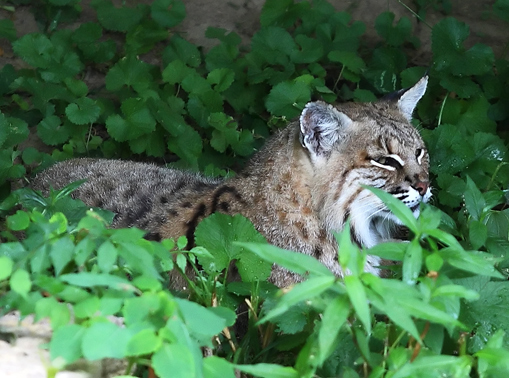By Art lander Jr.
FRANKFORT, Ky. Using DNA as a way to identify individuals is not restricted to the investigation of crimes against humans.
Wildlife law enforcement officers have been relying on DNA evidence since the late 1980s to help prosecute persons who take wildlife illegally. Biologists discovered that DNA provides valuable information about the population dynamics of the wildlife they monitor and manage.

“We use DNA as a forensic, investigative tool,” said Capt. Myra Minton, acting assistant director of law enforcement for the Kentucky Department of Fish and Wildlife Resources. “I can recall several cases where we used the DNA in blood evidence to match a gut pile to a deer carcass, or a deer head in a freezer with a deer carcass that had its head removed.”
Minton said the department sends evidence samples to the U.S. Fish and Wildlife Service National Forensics Laboratory in Ashland, OR, the only lab in the world dedicated to crimes against wildlife. The lab supports wildlife law enforcement efforts in all 50 states and the 150 foreign countries that have signed the CITES Treaty (Convention on International Trade in Endangered Species).
DNA profiling, sometimes referred to as genetic fingerprinting, was developed by British geneticist Sir Alec Jeffreys in 1984.
Much of what we know about black bears in Kentucky is the result of DNA analysis. “We use hair snares as a non-invasive sampling method,” said Steven Dobey, the departments bear program coordinator. “The DNA extracted from hair follicles allows us to individually identify each bear, determine the sex ratio of the population and ultimately estimate the size of the population.”
Without DNA, there would be many important details about Kentucky bears that wouldnt be known otherwise, such as the very high proportion of females. A high number of female bears indicate the Kentucky population is past the colonization phase.
“By looking at the genetics we’ve determined that we have two bear populations in Kentucky: one along the Pine and Black Mountain areas from Pike to Bell counties, and one in the Big South Fork area of McCreary County,” said Dobey. “On a genetic basis, these two populations are relatively distinct and it appears there’s very little interchange among the bears from these two areas.”
Biologists who monitor populations of migratory birds have also found DNA to be critically important to their work.
Avian biologist Shawchyi Vorisek said a cooperative program with the University of Kentucky involves DNA analysis of golden-wing and blue-wing warblers, neotropical songbirds that nest in Kentucky. “These two species have started to hybridize throughout their entire range,” said Vorisek. “We’re trying to figure out how much they have hybridized, if they are separate species, and if we need to manage them as separate species.”
Sometimes DNA analysis can be used to answer difficult questions.
“We had a hunter who shot at what he thought was a mountain lion while bow hunting in Pennyrile State Forest,” said Dobey. “There was some hair on the arrow so we sent it to the U.S. Forest Service Rocky Mountain Research Station, and the genetic lab verified that the hair was from a bobcat, not a mountain lion.”
DNA testing is not just for C.S.I. reruns. It helps biologists determine population dynamics and conservation officers catch poachers.
Media Contact: Art Lander 1-800-858-1549, ext. 4414


Be the first to comment